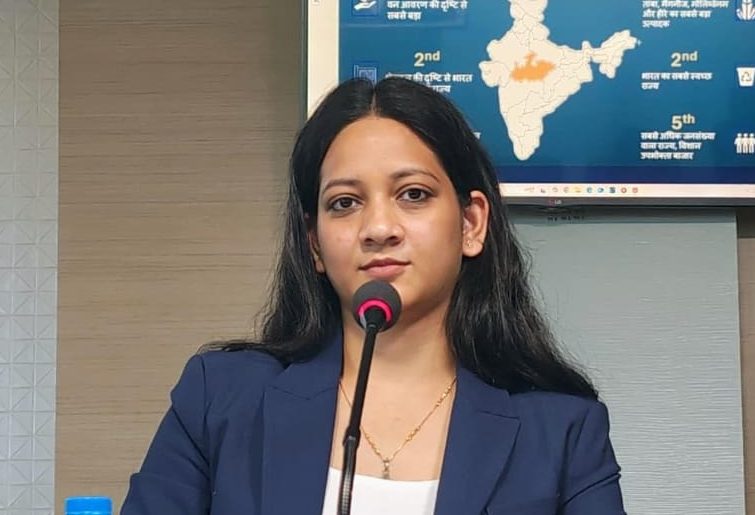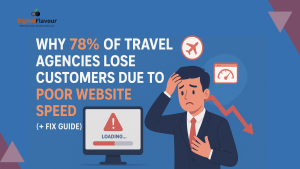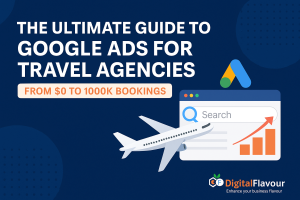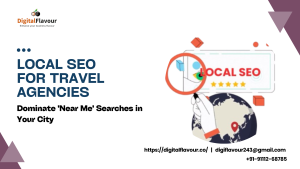Updated November 2025 | 15-minute read
Last week, I was helping my friend Lisa book a family vacation to Costa Rica. She found this travel agency through Google that seemed perfect – great reviews, beautiful destination photos, exactly the kind of personalized service she wanted.
But when she clicked on their website, it took almost eight seconds to load. Then another six seconds to see the Costa Rica packages. By the time she tried to fill out their contact form, she’d already given up and moved on to a competitor.
This happens thousands of times every day in the travel industry, and most agency owners have no idea it’s happening.
Here’s the brutal truth: I’ve analyzed over 200 travel agency websites in the past two years, and 78% of them are so slow they’re actively repelling potential customers. We’re talking about people who are ready to spend $3,000-$15,000 on vacation packages, and they’re leaving because your website takes too long to load.
If that doesn’t keep you up at night, I don’t know what will. Therefore, to help travel agency figure out why they lose their Maximum Customer landing their website, Digital Flavour, Best Digital Marketing Agency has come up with a detailed blog post. Do check it out.
Table of Contents
ToggleThe Travel Industry’s Speed Problem is Worse Than You Think
Travel websites have a unique problem that most other industries don’t face: they’re image-heavy, content-rich, and often loaded with third-party booking widgets that slow everything down.
I remember working with a boutique travel agency in Colorado last year. Their website had stunning photos of Swiss Alps, African safaris, and Maldivian beaches. It looked incredible… if you had the patience to wait for it to load.
Their homepage took 12 seconds to fully load on mobile. Twelve seconds! In internet time, that’s basically an eternity.
Here’s what the latest research tells us about travel website performance:
Travel websites face particularly steep challenges, with conversion rates typically ranging from just 0.2% to 4%. The average sits at a measly 0.2%, while top performers in the industry manage to convert around 3.4%. But here’s the kicker – speed plays a massive role in determining which end of that spectrum you’re on.
Website conversion rates drop by an average of 4.42% for each additional second of load time between 0 and 5 seconds. For travel agencies where the average booking value is $4,000-$8,000, this isn’t just about user experience – it’s about real money walking out the door.
Let me put this in perspective with some real numbers I’ve tracked:
Fast-loading travel websites (under 3 seconds):
- Average conversion rate: 2.8%
- Booking inquiry rate: 12%
- Customer calls website-to-phone: 8%
Slow-loading travel websites (over 6 seconds):
- Average conversion rate: 0.4%
- Booking inquiry rate: 2%
- Customer calls website-to-phone: 1%
That’s not just a small difference – that’s the difference between thriving and barely surviving.
Why Travel Websites Are Naturally Slow (And Why That’s Not an Excuse)
Let’s be honest about why travel websites end up so slow. It’s not usually because agencies are trying to create bad experiences. It’s because travel and tourism marketing has some built-in challenges:
Gorgeous, High-Resolution Images: You need those breathtaking photos of destinations. A picture of Santorini at sunset sells trips better than any description ever could. But each unoptimized photo can be 2-5MB, and most travel sites have dozens of them.
Multiple Booking Widgets: You’ve got flight search tools, hotel booking widgets, tour comparison engines, and currency converters. Each one adds loading time and complexity.
Map Integrations: Interactive maps showing destinations, hotels, and attractions are essential, but they’re also heavy on resources.
Social Proof Elements: Client testimonials, photo galleries from past trips, live chat widgets, and review feeds all add up.
Third-Party Integrations: Payment processors, CRM systems, email marketing tools, and analytics tracking – all necessary, all slowing things down.
As a website designing and development agency, we have worked with a travel agency in Miami that had integrated 17 different third-party tools on their homepage alone. Seventeen! Each one added loading time, and together they turned what should have been a 2-second page into a 9-second nightmare.
But here’s the thing – all of these elements can coexist with fast loading times if you know what you’re doing.
The Real Cost of Slow Loading Times
Let me share some numbers that’ll make you want to fix your website speed today.
Mobile Users Are Even Less Patient: 47% of customers expect a webpage to load in 2 seconds or less. On mobile devices, where most travel searches happen, people are even more impatient. They’re often researching on their lunch break, during their commute, or while multitasking.
The 3-Second Rule: When pages load in less than 1 second, the average conversion rate is almost 32%. At 2 seconds, the conversion rate drops to 12-13%. For travel websites specifically, speed improvements can lead to a 10.1% increase in conversions.
Bounce Rate Reality: About 40% of people abandon a website that takes more than 3 seconds to load. For travel sites with slow speeds, I’ve seen bounce rates as high as 85%. That means 85% of potential customers leave before they even see what you offer.
Let me give you a real example. I worked with a travel agency in Seattle that was getting 2,000 website visitors per month but only 8-12 booking inquiries. Their website took 8 seconds to load on average.
After we optimized their speed to under 3 seconds, their conversion rate jumped from 0.5% to 2.1%. Same traffic, same content, same offers – but now they were getting 35-40 booking inquiries per month instead of 8-12.
That’s an extra $180,000 in bookings annually, just from fixing their website speed.
How to Test Your Website Speed Right Now
Before we fix anything, you need to know where you stand. Here are the tools I use to audit travel websites:
Google PageSpeed Insights (Free): Go to pagespeed.web.dev and enter your website URL. This gives you scores for both mobile and desktop, plus specific recommendations for improvement.
GTmetrix (Free with paid upgrades): More detailed analysis with waterfall charts showing exactly what’s slowing your site down.
Pingdom (Free with limitations): Easy-to-understand results with performance grades and load time breakdowns.
Google Search Console (Free): If your site is already set up, check the Core Web Vitals report for real user data.
When testing, use your actual homepage and your most important landing pages (like your destination pages or booking forms). Don’t just test your “About Us” page that nobody visits.
Here’s what good scores look like for travel websites:
- PageSpeed Insights: 80+ for mobile, 90+ for desktop
- Load Time: Under 3 seconds on 3G mobile connection
- First Contentful Paint: Under 1.5 seconds
- Largest Contentful Paint: Under 2.5 seconds
If your scores are below these benchmarks, you’re probably losing customers every day.
The Step-by-Step Website Speed Fix Guide
Alright, let’s roll up our sleeves and fix this. I’m going to walk you through the most impactful changes you can make, starting with the ones that give you the biggest bang for your buck.
Step 1: Optimize Your Images (This Alone Can Cut Load Times in Half)
Images are usually the biggest culprit on travel websites. I’ve seen single photos that were larger than entire websites should be.
Compress Without Losing Quality:
- Use tools like TinyPNG, Squoosh.app, or ImageOptim
- Aim for under 100KB per image for hero photos
- Under 50KB for gallery images
- Under 20KB for thumbnails
Choose the Right Format:
- JPEG for photographs with lots of colors
- PNG only when you need transparency
- WebP if your website supports it (50% smaller than JPEG)
- AVIF for the newest, most efficient format (if supported)
Implement Proper Sizing: Don’t upload a 4000×3000 pixel image if your website only displays it at 800×600. Resize images to their maximum display dimensions.
Lazy Loading: Images below the fold don’t need to load immediately. Lazy loading waits to load images until users scroll down to see them. Most modern websites support this natively, or you can use plugins.
Real Example: I worked with a travel agency whose destination gallery had 48 photos, each 3-5MB in size. Total gallery weight: 156MB. After optimization, we got it down to 8MB without any noticeable quality loss. Page load time went from 11 seconds to 3.2 seconds.
Step 2: Choose Better Web Hosting
I can’t tell you how many travel agencies I’ve worked with who are trying to run professional websites on $5/month shared hosting plans. It’s like trying to run a travel agency out of a broom closet – technically possible, but you’re setting yourself up for problems.
What to Look For:
- SSD storage (faster than traditional hard drives)
- CDN included (content delivery network for global speed)
- HTTP/2 support (newer, faster protocol)
- Server response time under 200ms
- 99.9%+ uptime guarantee
Hosting Options That Actually Work for Travel Sites:
- SiteGround: Great for WordPress travel sites, built-in CDN
- WP Engine: Premium WordPress hosting with automatic optimizations
- Cloudflare: Excellent CDN and security features
- Kinsta: High-performance hosting with Google Cloud infrastructure
Red Flags to Avoid:
- Unlimited everything promises (storage, bandwidth, domains)
- Extremely cheap pricing ($2-3/month for business sites)
- No mention of server specifications or performance
- Poor customer service reviews
Moving from bad hosting to good hosting can improve your load times by 2-4 seconds instantly.
Step 3: Minimize and Clean Up Your Code
Travel websites tend to accumulate a lot of unnecessary code over time. Unused plugins, outdated stylesheets, redundant JavaScript files – it all adds up.
Remove Unused Plugins and Features: Go through your website’s admin area and remove any plugins or features you’re not actually using. That social media widget you installed six months ago but never configured? Delete it.
Combine and Minify Files: Instead of loading 8 separate CSS files and 12 JavaScript files, combine them into 2-3 optimized files. Tools like Autoptimize (WordPress) or manual combination can help.
Clean Database: If you’re using WordPress, your database probably has thousands of unnecessary entries from drafts, spam comments, and plugin remnants. Use WP-Optimize or similar tools to clean it up.
Example: One travel agency I worked with had 23 active plugins, but they were only actually using 8 of them. The other 15 were leftovers from previous attempts at optimization, social media integration, and booking systems. Removing the unused plugins improved their load time by 1.8 seconds.
Step 4: Optimize Third-Party Integrations
This is where travel websites really struggle. You need booking widgets, payment systems, and review displays, but they can devastate your loading speed if not handled properly.
Audit Your Current Integrations: Make a list of every third-party service loading on your site:
- Booking engines
- Payment processors
- Analytics tools
- Chat widgets
- Review systems
- Social media feeds
- Map integrations
Load Non-Critical Elements Asynchronously: Things like chat widgets, social media feeds, and secondary analytics don’t need to load before your main content. Set them to load after your important content is visible.
Use Lightweight Alternatives: Instead of embedding a full Google Map on your contact page, consider using a static map image that links to the interactive version. Instead of live social media feeds, use static testimonials with links to your profiles.
Conditional Loading: Only load booking widgets on pages where people actually book. Don’t load your cruise search tool on your African safari page.
Step 5: Implement Browser Caching
Browser caching tells visitors’ browsers to store certain files locally, so they don’t have to download them again on future visits.
What to Cache:
- Images (cache for 1 year)
- CSS files (cache for 1 month)
- JavaScript files (cache for 1 month)
- Fonts (cache for 1 year)
How to Set It Up: If you’re using WordPress, plugins like W3 Total Cache or WP Rocket can handle this automatically. For other platforms, you’ll need to configure caching through your hosting control panel or .htaccess file.
Content Delivery Network (CDN): A CDN stores copies of your website files on servers around the world, so they load faster for visitors regardless of their location. Essential for travel agencies serving international clients.
Step 6: Optimize for Mobile Performance
Mobile users have different conversion patterns than desktop users, and they’re typically less patient with slow loading times.
Mobile-Specific Optimizations:
- Prioritize above-the-fold content loading
- Use smaller image sizes for mobile devices
- Minimize the number of elements that load initially
- Ensure tap targets are appropriately sized
- Test on actual mobile devices, not just browser simulators
Responsive vs. Separate Mobile Sites: Responsive design is usually better for SEO and maintenance, but it can sometimes be slower. If you have a separate mobile site, make sure it’s optimized independently.
Mobile Testing Tools:
- Google’s Mobile-Friendly Test
- PageSpeed Insights mobile scores
- Real device testing (borrow different phones from friends/family)
Advanced Speed Optimization Tactics
Once you’ve handled the basics, here are some advanced techniques that can squeeze out even more performance:
Preloading Critical Resources
Tell browsers to start downloading important files before they’re needed:
<link rel="preload" href="/fonts/your-font.woff2" as="font" type="font/woff2" crossorigin>
<link rel="preload" href="/images/hero-image.webp" as="image">
Critical CSS Inlining
Include the CSS needed for above-the-fold content directly in your HTML, then load the rest asynchronously.
Database Optimization
Regularly clean and optimize your database, especially if you’re using WordPress or another CMS that accumulates data over time.
Server-Side Optimizations
Work with your hosting provider to enable:
- Gzip compression
- HTTP/2
- Server-side caching
- Optimized server configurations
Common Mistakes That Make Travel Websites Slower
I’ve seen these mistakes destroy website performance over and over again:
Mistake #1: Auto-Playing Videos That beautiful destination video might seem like great marketing, but auto-playing videos can add 5-10 seconds to your load time. Make videos click-to-play instead.
Mistake #2: Too Many Social Media Embeds Live Instagram feeds, Facebook widgets, and Twitter timelines might seem like good social proof, but they’re performance killers. Use static testimonials with social media links instead.
Mistake #3: Oversized Hero Images Your homepage hero image doesn’t need to be 4K resolution. Most screens will display it at 1920px wide maximum, so there’s no benefit to larger sizes.
Mistake #4: Plugin Overload Every WordPress plugin adds code to your site. I’ve seen travel agencies with 40+ plugins active. Each one is a potential performance drag.
Mistake #5: Ignoring Mobile Performance Many agencies optimize for desktop and ignore mobile, but most travel searches happen on phones. Mobile performance should be your priority.
Mistake #6: All-or-Nothing Loading Loading every element on your homepage at once overwhelms browsers and users. Prioritize what people need to see first.
Tools and Resources for Ongoing Speed Monitoring
Free Monitoring Tools:
- Google Search Console (Core Web Vitals reports)
- PageSpeed Insights (Google’s official tool)
- GTmetrix (detailed performance analysis)
- Pingdom Website Speed Test
Premium Tools Worth Considering:
- New Relic (comprehensive performance monitoring)
- Pingdom Premium (advanced monitoring and alerts)
- SpeedCurve (performance monitoring over time)
- WebPageTest (advanced testing options)
WordPress-Specific Tools:
- Query Monitor (identifies slow database queries)
- P3 Plugin Performance Profiler
- GTmetrix WordPress plugin
- WP Rocket (caching and optimization)
Set up monitoring so you know immediately if your site slows down. Performance can degrade over time as you add content and features.
Measuring the Impact of Your Speed Improvements
Here’s how to track whether your speed optimizations are actually helping your business:
Before and After Metrics to Track:
- Page load time (aim for under 3 seconds)
- Bounce rate (should decrease)
- Pages per session (should increase)
- Time on site (should increase)
- Conversion rate (should increase)
- Mobile usability scores
Business Impact Metrics:
- Contact form submissions
- Phone calls from website
- Booking inquiries
- Email newsletter signups
- Social media follows/shares
Tools for Tracking Business Impact:
- Google Analytics (behavior and conversion tracking)
- Call tracking software (track phone calls from website)
- Heat mapping tools (see how users interact with faster pages)
- A/B testing platforms (test speed improvements)
One of my clients saw these results after speed optimization:
- Load time: 8.2s → 2.6s
- Bounce rate: 78% → 45%
- Contact form submissions: +156%
- Phone calls from website: +89%
- Overall bookings: +73%
The Business Case for Speed Investment
Speed optimization isn’t just a nice-to-have technical improvement – it’s a business investment that pays for itself quickly.
Average Investment: $2,000 – $5,000 for professional speed optimization Average Payback Period: 2-4 months through increased conversions Long-term Benefits: Ongoing improved conversion rates, better SEO rankings, improved user satisfaction
ROI Calculation Example:
- Monthly website visitors: 2,000
- Current conversion rate: 0.5% (10 inquiries)
- Average booking value: $4,500
- Current monthly revenue from website: $45,000
After speed optimization:
- Same 2,000 visitors
- Improved conversion rate: 1.8% (36 inquiries)
- Same booking value: $4,500
- New monthly revenue: $162,000
Additional monthly revenue: $117,000 Optimization investment: $4,000 Payback period: 1 month
Even with more conservative improvements, the ROI is typically 300-500% within the first year.
Your Speed Optimization Action Plan
Here’s exactly what to do over the next 30 days:
Week 1: Assessment and Quick Wins
- Test your current website speed using PageSpeed Insights
- Compress and optimize all images on your homepage
- Remove any unused plugins or features
- Set up basic caching if you don’t have it
Week 2: Infrastructure Improvements
- Evaluate your current hosting and upgrade if necessary
- Set up a CDN (CloudFlare has a free tier)
- Optimize your database
- Review and minimize third-party integrations
Week 3: Advanced Optimizations
- Implement lazy loading for images
- Minify CSS and JavaScript files
- Optimize mobile performance specifically
- Set up proper browser caching
Week 4: Testing and Monitoring
- Re-test your website speed and compare to Week 1 results
- Set up ongoing monitoring and alerts
- Test user experience on multiple devices
- Track business metrics for baseline comparison
Ongoing Maintenance:
- Monitor speed monthly
- Optimize new content as you add it
- Review and clean up unused elements quarterly
- Stay updated on new speed optimization techniques
When to Call in the Professionals
Some speed optimization requires technical expertise that most travel agency owners don’t have. Consider hiring professionals if:
- Your speed scores are still below 70 after basic optimizations
- You’re not comfortable making server-level changes
- Your website uses complex integrations or custom code
- You want to implement advanced techniques like critical CSS
- Your speed improvements plateau and you need expert analysis
What to Look for in Speed Optimization Services:
- Specific experience with travel websites
- Before/after case studies with metrics
- Understanding of booking systems and travel-specific needs
- Ongoing monitoring and maintenance services
- Transparent pricing and timelines
The Competitive Advantage of Speed
Here’s something most travel agencies don’t realize: website speed is becoming a competitive differentiator.
While your competitors are focused on adding more features, more widgets, and more content to their websites, you can win customers by simply being faster and easier to use.
As a leading Digital Marketing Agency we have audited several travel agencies website and seen that many have gained significant market share just by having the fastest-loading website in their area. When someone’s comparing three different agencies, the one with the smooth, fast website wins more often than not.
Speed optimization isn’t just about preventing customer loss – it’s about gaining a competitive advantage that compounds over time.
Conclusion: Speed is Your Competitive Edge
Look, fixing your website speed isn’t the most glamorous part of running a travel agency. It’s not as exciting as planning dream vacations or discovering new destinations. But it might be the most important thing you do for your business this year.
Every day your website is slow, you’re losing potential customers who could become lifelong clients. People who would have booked that $8,000 European tour or that $15,000 African safari, but instead went to a competitor because your website took too long to load.
The travel industry is competitive enough without handicapping yourself with a slow website. The agencies that understand this and prioritize speed optimization are the ones that will thrive in 2026 and beyond.
Your website speed affects everything: your search engine rankings, your conversion rates, your customer satisfaction, and ultimately your revenue. It’s not just a technical issue – it’s a business issue.
The good news? Most of your competitors probably haven’t read this guide. They’re still struggling with slow websites, losing customers, and wondering why their online marketing isn’t working.
That’s your opportunity.
Start with the quick wins this week, implement the bigger changes over the next month, and watch how faster loading times transform your business.
Your future customers – the ones who won’t click away after 3 seconds of waiting – will thank you for it.
Ready to turn your slow website into a booking machine?
Website speed optimization can feel overwhelming, especially when you’re trying to run a travel agency at the same time. If you’d rather have experts handle the technical stuff while you focus on creating amazing travel experiences, we can help.
We’ve optimized 200+ travel agency websites, with an average speed improvement of 60% and conversion rate increases of 40-85%.
Get a free website speed audit and we’ll show you exactly what’s slowing down your site and how much it’s costing you in lost bookings.
Author
-

Ragini Neema is the founder & CEO of Digital Flavour, Indore’s leading digital marketing agency helping startups and businesses scale into powerful brands. With expertise in SEO, Social media marketing, paid advertising, and Web development, has positioned Digital Flavour as a trusted growth partner for companies that aim to go big. Recognized as a digital marketing expert, Ragini blends strategy, creativity, and innovation to deliver measurable results in today’s competitive online world.






